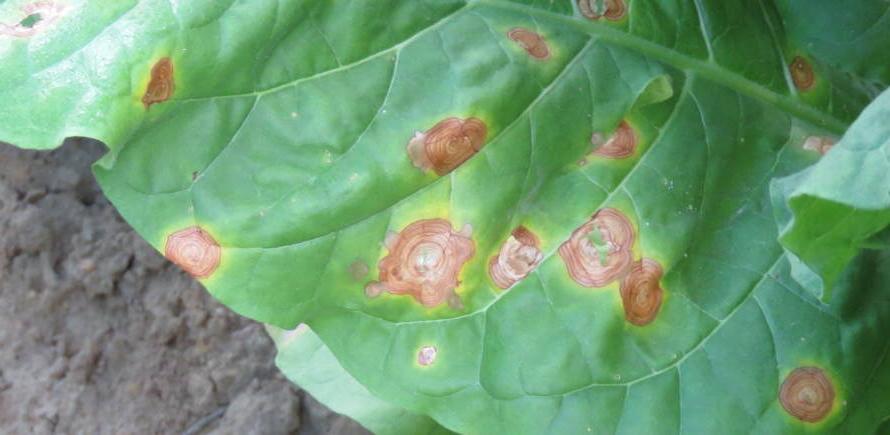Tobacco seedlings are produced in two different ways:
- Traditionally in soil
- In hydroponic float system production
As seedbeds are established in the same year as the previous crop, it is essential to provide a “Sanitation break” between the previous crop and the start of seedbeds (ie absence of any plant material during a certain period between two plant production cycles.) During this period the surface of shelters, equipment such as trays, tools, plant tables, seedling carry bags, old seedbed covers and nappy liner that are being reused must be disinfected to destroy spores and propagules of pathogens. This can be done using Magfectant (Germol-S-Dacc.)
In traditional seedbeds, hygiene starts with your soil in the site. Ideally, the area should be fumigated with either Metham Sodium or Basamid. This is done for control of grasses, nematodes, fungi and bacteria and should be done at least one month prior to sowing; ensuring that all the gas has escaped and doesn’t damage the young seedlings.
As for the float bed system, a gromix or a cocoa peet mixture is generally used in the the trays which is fumigated by the supplier.
The seedbed site should be fenced off to stop unauthorised people from walking through the site and should only have one entrance so all authorised people clean shoes and hands before entering site. This can be done with Magfectant (Germol-S-Dacc). All tools used on the site should also be disinfected.
Production of seedbeds takes place at a time of year during which growing conditions, including weather are not favourable for plant growth and most production at this time of the year in done under plastic over hoops, flat plastic or nappy liner to allow favourable physiological conditions and environment for the seedlings.
Seedlings as well as mature plants may be infected by the same diseases but unlike mature plants the seedlings in their juvenile stage have particularly tender tissues which make them more susceptible to disease and mature plants.
Environmental conditions greatly influence the quality of young seedlings. The result of inappropriate conditions such as high density planting, unsuitable fertigation and poor climatic conditions make your seedlings even more vulnerable to disease.
In general, the environmental conditions under plastic can be characterised by:
- lower than normal light
- very little air exchange with the outside environment
- higher relative humidity as a result of evapotranspiration from plants and soil
- above optimal temperatures for growth
It is obvious in these conditions, especially the higher humidity under the plastic tents, are quite favourable to disease development, especially those caused by fungi and bacteria. It should be noted that the presence of free water on leaves allows the germination of fungal spores, multiplication of plant pathogenic bacteria etc. Extreme temperatures affect more visibly the leaves than the roots. For instance leaves burn when too high or deform/curl after frost. However, it is the soil temperature which determines the healthy growth of plants. An excessively wet and cold soil is often conducive to development of damping-off agents.
Seedbeds are also characterised by high density of plants. This situation is particularly dangerous for example, only a few viruliferous aphids are sufficient to rapidly contaminate a large number of plants.
As your seedbeds are condensed it is the cheapest and first port of call for controlling disease and pests in order for you to produce disease free healthy seedlings for transplanting. A general seedbed program is as follows:
- Fumigation with Metham Sodium or Basamid a month prior to sowing.
- Confidor or Thunder at sowing for control of Aphids, cutworm, ants and termites.
- Decis or Karate Zeon at germination for cutworm.
- Magfectant (Germol-S-Dacc) in floatbed water at sowing for control of algae.
- Azoxy Duo (Four Sprays weekly) from 3 weeks after germination for Alternaria & frogeye.
- Copper Oxychloride sprayed weekly and after every clipping for Angular leaf spot and Alternaria.
- Mancozeb or Bravo sprayed weekly after the completion of the Azoxy Duo sprays for Alternaria and frogeye.
- Ridomyl gold at 4 to 6 weeks after germination in floatbeds for Pythium root rot.
- Thunder or Bullet at 5,8 and 11 weeks after germination for control of budworm & aphids.
- Galmano Plus, Baytan or Shavit applied 2 days before pulling for Soreshin.


